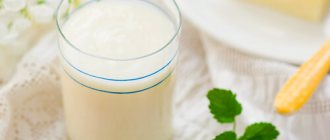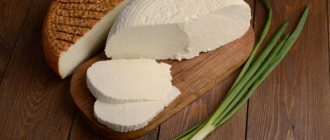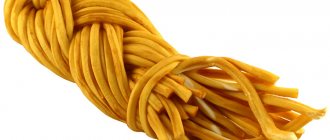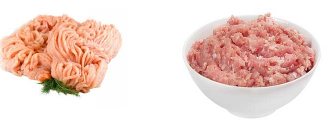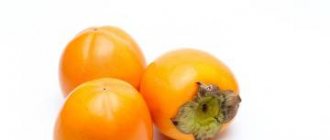Calorie intake per day
As such, there is no single and generally accepted daily calorie intake. According to the recommendations of the World Health Organization, “energy entering the body (in calories) must be balanced with energy expended.” Thus, your individual calorie intake depends, first of all, on the nature of your work, level of physical activity, gender, age and a number of other factors. However, on the Internet you can find many tables and calculators of unknown origin, offering information on daily values, supposedly based on authoritative sources. We believe that the quality of this information is quite questionable.
The most reliable way to determine individual calorie needs is to simply calculate the energy value of food consumed during the day (or several days). Just record your normal daily diet on paper. Write down what and how much you ate during the day. Calorie content can be directly calculated using information from product labels and using our website. Provided that you are healthy and your weight does not change much with your current diet, the results obtained can be conditionally considered your daily norm.
To lose weight, you need to slightly reduce your daily energy intake. If you maintain your current lifestyle, you will experience a slight calorie deficit because your costs will remain the same. This will lead to the gradual burning of your fat reserves. What exactly the deficit should be is up to you to decide. We strongly advise against increasing it sharply, because... it won't lead to anything good. Reduce your calorie intake gradually and lose weight slowly. This way you won’t have to torture yourself and break down from time to time. And of course, before making any dietary changes, we strongly recommend that you consult with your doctor or qualified dietitian.
The benefits of cheese
Cheese is an extremely healthy and nutritious product recommended by nutritionists. Its value for any person, and especially for those who are actively involved in sports, is undeniable.
protein content in cheese is higher than in meat or fish. For example, 70 g of Emmental cheese contains of protein as 100 g of fish, 100 g of meat and 2 eggs. Cheese contains vital amino acids: methionine, lysine, tryptophan, as well as microelements such as phosphorus, zinc, calcium, which restores bone tissue. The amount of calcium in 500 g of cheese is approximately equal to the amount of calcium in 4.5 liters of milk. Just 100 g of cheese per day covers a person’s needs for most vitamins (A, B2, B12, D) and minerals. Moreover, the body absorbs all the beneficial substances from cheese almost completely.
Cheese is very useful for those who expend a lot of energy: children, nursing mothers and pregnant people engaged in physical labor. The average fat content (which is the main source of energy) in this product is about 30%.
| Name | Kcal per 100 g | Name | Kcal per 100 g |
| Hochland cheese in a briquette | 193.0 | Hochland cheese in slices | 279.0 |
| Processed cheese Druzhba, 55% | 287.3 | Adyghe cheese | 283.0 |
| Cheese Orbit | 193.0 | Smoked sausage cheese | 270.0 |
| Cow's milk cheese | 260.0 | Brie cheese | 309.0 |
| Sheep's milk cheese | 298.0 | Camembert cheese | 291.0 |
| Suluguni | 285.0 | Parmesan cheese | 452.0 |
| Dutch cheese | 352.0 | Cheese Tilsiter | 334.0 |
| Homemade cheese, 4% fat | 114.0 | Edam cheese | 313.0 |
| Kostromskaya cheese | 345.0 | Emmental cheese | 380.0 |
| Cheese Poshekhonsky | 350.0 | Cheddar cheese | 379.0 |
| Roquefort cheese | 337.0 | Cheese Soviet | 389.0 |
| Russian cheese | 360.0 | Uglich cheese | 357.0 |
| Fat curd cheese | 175.0 | Chees Feta | 304.0 |
| Swiss cheese | 396.0 | Mozzarella cheese | 278.0 |
| Cheese Lithuanian | 258.0 | Cheese Estonian | 350.0 |
| Gouda cheese (45%) | 384.0 | Cheese Yaroslavl | 361.0 |
Read about how to prepare feta cheese at home in the article Cheese cheese at home.
Calorie content of processed cheese
Sep-2-2017 KoshkaS
Processed cheese is a product that is obtained by thermomechanical processing of one or more types of cheese with the addition of cottage cheese. The required components are melting salts or structure formers. In addition, the composition of processed cheeses often includes other dairy products, as well as dietary supplements and flavorings.
Creamy processed cheese is made from cottage cheese or low-fat cheese with the addition of dairy products, sour cream or cream.
The technology for producing processed cheeses includes the following steps.
Selection of cheese, butter and other dairy products. When choosing cheese, you should pay special attention to the degree of its ripeness, not forgetting that overripe and underripe cheeses do not melt well, and therefore they must be combined with mature ones.
The presence of spore-forming microorganisms in cheeses is unacceptable.
A particular threat is posed by butyric acid bacteria, which often cause spoilage of processed cheese, which has low acidity. Young cheese is often successfully replaced with cottage cheese when making processed cheeses. Also an essential component of such cheeses is cheese whey, which can be either condensed or dry.
Processing and grinding of raw materials. At this stage, the cheeses are cleaned of paraffin, latex or film, placed in a container with hot water, where they are kept until the rind softens. After this, the rind is cut off and the cheese is crushed or mashed.
Brine cheeses are soaked in water before grinding to remove excess salt. Butter, which is a component of processed cheese, is cut into pieces weighing 1–2 kg.
Sour cream and cream are filtered, and the dry ingredients are sifted.
Preparation of the mixture. The ingredients necessary to obtain processed cheese are mixed, flavoring agents and melting salts are added. The mass is left for 2–3 hours. Citric acid, as well as sodium citrate and phosphate salts are used as melting salts.
Melting mass. The process takes place in closed kettles, where the cheese mixture is heated to a temperature of 75–80 °C. In some cases it reaches 85–95 °C. The readiness of the cheese is determined by the consistency of the mass, which should become elastic and homogeneous.
Homogenization of mass. This procedure is carried out during the production of paste-like cheeses at a temperature of 75–80 °C.
Packaging. Processed cheese is packaged hot, in polymer boxes or glasses, as well as in film and foil.
Cooling. Cheeses are cooled in special chambers. The cooling period depends on the type of cheese and can last from 30 minutes to 16 hours.
This group of cheeses has been known in cooking for quite a long time and is classified as follows:
- Processed slice cheeses (suitable for cutting them into slices).
- Processed sausage cheeses (traditionally have the shape of sausages of different sizes).
- Paste-like processed cheeses (have a pasty, soft consistency).
- Sweet processed cheeses (contain sugar).
- Canned processed cheeses (have a long shelf life under certain conditions).
- Processed cheeses for lunch (used for preparing first courses, and also used as a seasoning).
How many calories are in processed cheese?
Well, what is the calorie content of processed cheese? And here it is:
The calorie content of processed cheese is 170 – 320 kcal per hundred grams of product
And depending on the type of cheese it’s like this:
Table of calorie content of processed cheeses depending on the type, per 100 grams of product:
| Product | Calories, in kcal |
| calorie content of Druzhba cheese | 287 |
| fermented milk | 233 |
| "Orbit" | 171 |
| with mushrooms for soup | 304 |
| with onions for soup | 323 |
| chocolate | 311 |
| cheese "Yantar" | 297 |
And the nutritional value of processed cheese (BJU), depending on the type of cheese, is this:
Table of nutritional value of processed cheeses, per 100 grams of product, depending on the variety:
| Product | Squirrels, gr. | Fats, gr. | Carbohydrates, gr. |
| cheese "Druzhba" | 15,0 | 24,2 | 2,5 |
| fermented milk | 14,1 | 18,0 | 3,7 |
| "Orbit" | 24,7 | 8,0 | 0,0 |
| with mushrooms for soup | 15,9 | 25,9 | 1,9 |
| with onions for soup | 16,4 | 28,6 | 0,0 |
| chocolate | 11,6 | 18,5 | 25,8 |
| cheese "Yantar" | 12,0 | 26,4 | 3,1 |
As you can see, the number of calories in processed cheese is quite high. So overweight people and those who do not want to gain extra pounds should think twice before introducing processed cheeses into their diet.
And here is the calorie content of cheeses in the table.
Is it possible to prepare any dish from this cheese at home? Of course you can!
Here are a couple of interesting recipes:
Sandwich with butter and melted cheese:
Ingredients: butter - 45 g, processed cheese - 45 g, wheat bread - 100 g, herbs.
Add processed cheese to softened butter, mix thoroughly until smooth, form into a rectangular bar, cool and cut into thin slices. Place the butter and cheese on a slice of bread and sprinkle with chopped herbs.
Cheese soup with peas:
Processed cheese - 2 pcs., cauliflower - 200 g, broth - 700 ml, canned green peas - 200 g, butter - 1 tbsp. l., dill and parsley, salt to taste.
Disassemble the cabbage into florets, boil in salted water and drain in a colander.
Place cauliflower and diced cheese into a saucepan with boiling salted broth, cook with constant stirring until they are completely dissolved.
Add green peas to the soup, cook for 10 minutes, then season the soup with butter and leave for 10 minutes. Pour the finished soup into deep plates and sprinkle with chopped dill and parsley.
Cheese soup with zucchini dumplings:
Processed cheese – 100 g, potatoes – 100 g, carrots – 70 g, onions – 50 g, zucchini – 100 g, egg – 1 pc., wheat flour – 4 tbsp. l., dill and parsley, ground black pepper and salt to taste.
Place diced potatoes in a pan of boiling salted water, cook for 7 minutes, then add chopped onion and chopped carrots, bring the soup to a boil, reduce heat and cook for another 5 minutes.
Grind the pre-cooled processed cheese, place it in a saucepan with soup and cook with constant stirring until it is completely dissolved.
Peel the zucchini, grate it on a fine grater, squeeze out the juice, mix the pulp with the egg, add ground pepper and salt, add flour, mix thoroughly. Using a teaspoon, place the zucchini dumplings into the boiling soup, add chopped dill and parsley and cook until the dumplings float to the surface.
Processed cheese: composition, benefits, harm and production
We continue the “Recipes” section and the “Do it yourself” subsection with the article “Processed cheese: composition, benefits, harm and production.” Where we, of course, will talk about the composition of store-bought processed cheeses, and determine the benefits and harms of the components. Let’s also think about a homemade alternative (for example, as in the case of sausage - Sausage at home without the guts).
Processed cheese - there are wars on the Internet: to give or not to give to children? To eat or not to eat? Benefit or harm? Both sides have interesting arguments. Oddly enough, it is very simple and easy to resolve these disputes - whether to give processed cheese to a child or not - with the help of our article

